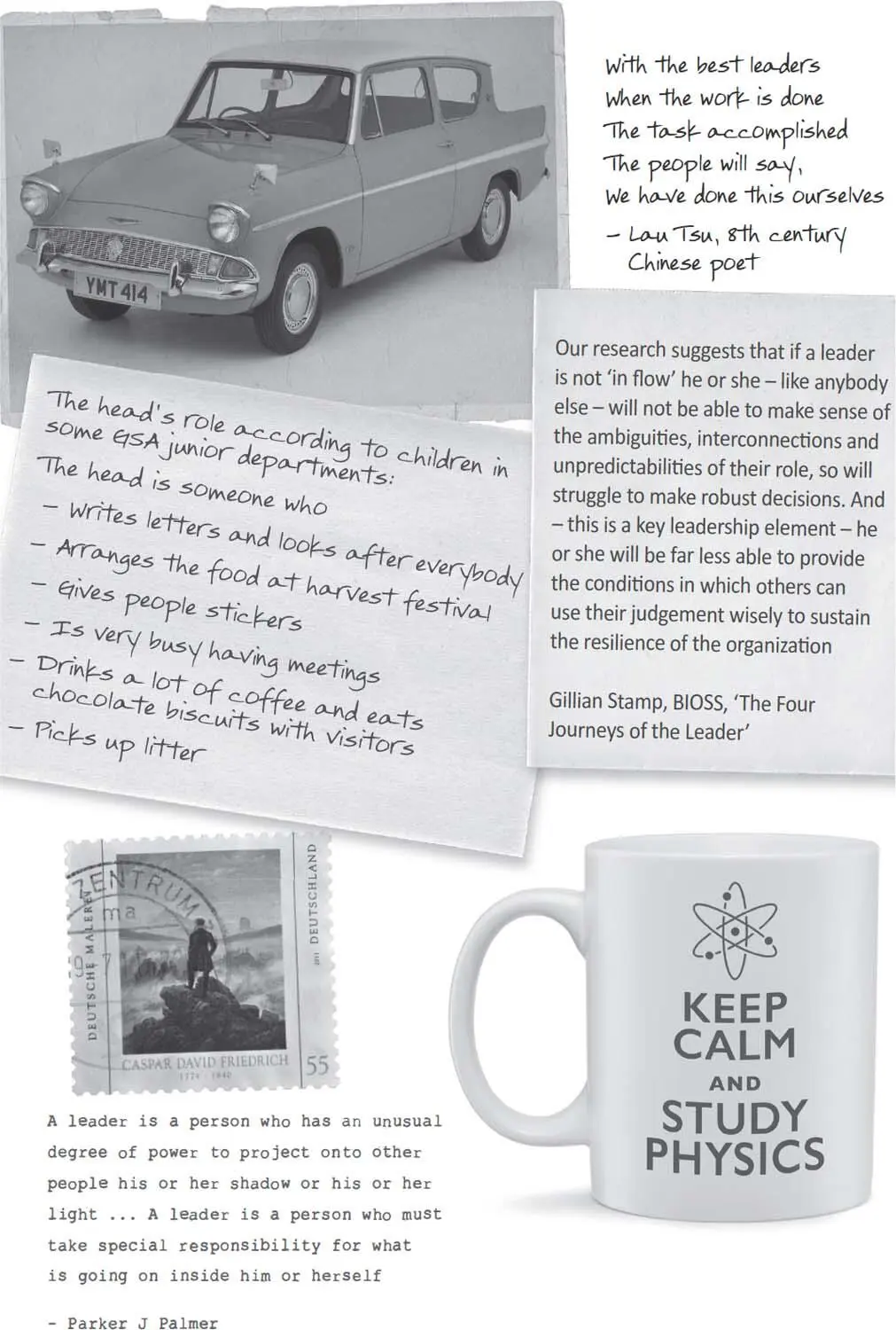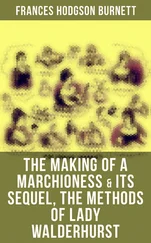
CHAPTER 3
November
Headship – opening up the path on which the next generation will travel
The second half of the autumn term began for me with the annual residential conference for head teachers. Roller cases packed, determined headmistresses would set off to different parts of the country: I have compared the Bayliss & Harding bathroom products in Buxton and Brighton, Bristol and Birmingham. Imagine 200 headmistresses confined for three days to an air-conditioned hotel – the brisk competence, the curbing of instincts to say ‘shush!’ and take control, the sidelong glances at each other’s outfits. And what was going on in the schools they were supposed to be running? I wished my senior management team an enjoyable few days and caught the train, knowing they would appreciate the freedom – after all, why develop people’s leadership skills if you’re not going to trust them? I just had to promise not to come back with too many bright ideas for them to listen to patiently – a sudden whim to do away with bells, perhaps, or a scheme to buy a field-study centre in north Wales …
As I picture myself on that train journey, slanting November rain spattering the windows, the image of a certain familiar and bespectacled headmistress from the 1970s reappears, smiling quizzically before me. She is the headmistress of Sunny Hill, the romantically and improbably named Desirée Fawcus Cumberlege, my headmistress: Dizzy. Born in India in 1919, a cross between Maggie Smith and Joyce Grenfell, she would tiptoe along the polished parquet corridors of Sunny Hill in fully fashioned stockings and kitten heels, dizzily occupying some higher realm, her academic gown, worn over pastel tweeds, floating out behind her like sails. Her hair was always disciplined into a silvery permanent wave and her winged glasses, sitting at a slight tilt, gave her a faintly surprised look. Like many of her generation she appeared to live entirely for her work: there was no Mr Cumberlege, though we invented for her a tragic past and a dark, dashing officer fiancé, who had (ah! poor Dizzy!) been lost over the Channel in the war. He may even have existed – we embellished him regardless and the lonely life we supposed her to have led since. A distant figure, Dizzy rarely spoke to us except to address her pupils in assembly: ‘Let me make it clear, girls: there are to be no more non-regulation shoes seen, otherwise we will all wear sensible, lace-up “Rosamund”!’ But I do remember one thrilling afternoon when my friend Avril and I were invited to go with her to tea at the house of an elderly former pupil. It was for me an unconscious lesson in leadership that I would remember years later.
The invitation arose because of my bossiness. It was the summer term and we had been asked as pupils to make recommendations for the award of the Radford Award, bestowed annually on a pupil in our form who had shown the most public-spirited attitude during the school year. A benefactor nowadays would know better than to lay themselves open to the risks of litigation inherent in this gesture, but in those days it was genuinely thought that the girls could simply exercise their good judgement and choose appropriately – such simple times we lived in then. When success fell on the most popular girl in our class, admired for her smooth brown hair, permanent golden tan and exotic elephant-hair bracelets bought at home in Kenya, I felt it right to make a democratic stand and insist that, the next year, proper criteria were drawn up to ensure that this was not merely a popularity vote. No doubt I was motivated largely by envy at not being chosen myself, but Miss Cumberlege (she had met girls before who wanted to advise her on how to run the school) brightly suggested we should put this idea to Miss Radford, our benefactor, who duly invited us to tea in her garden.
Accompanied by Avril, a compact, hockey-playing girl with a straight black fringe sitting above an equally straight nose, I waited on the appointed afternoon outside a dark wooden hut we knew to be Miss Cumberlege’s garage. Neither of us had ever seen what was inside the garage, suspecting it to contain agile spiders and perhaps a broken-down lawnmower, but when the headmistress arrived, dressed for the occasion in a silk headscarf and looking very slightly like a primmer Grace Kelly, the doors opened to reveal the back of a very clean, pale blue Ford Anglia. This remarkably slim car with its upturned tail lights reminiscent of its owner’s glasses was clearly Miss Cumberlege’s prized possession, neatly parked in the tiny garage like a model in its matchwood box.
Avril and I waited. Miss Cumberlege squeezed herself behind the wheel and backed expertly out. We climbed in and were soon bowling down the Somerset lanes, the huge cow parsley stems in the summer hedgerows parting as we passed, like the palm trees on Thunderbirds Tracy Island. We felt free as air. I have no recollection now of the outcome of our conversation with Miss Radford, though the old lady seemed delighted at this impromptu tea party with young visitors from her dimly remembered school. Sitting in the wild country garden with its gnarled apple trees, where lazy wasps knocked against our glasses of homemade lemonade, she served us large slices of seed cake, and ever since I have associated the taste of caraway with grandmotherly baking and with being on your best behaviour with older people. For us, the adventure lay in the fact that, contrary to our belief, Miss Cumberlege was actually a real person: she did not cease to exist when outside the school gates. Perhaps when the term ended, she got into the Ford Anglia and went far away from Sunny Hill to a home somewhere, where there was another small garage and a mantelpiece with a silver-framed photograph of a darkly handsome man. Who knew? It was from this afternoon adventure that I understood long afterwards the importance of taking the challenges and opinions of young people seriously, being seen to do so, and giving them time. I was satisfied aged twelve that I had been listened to and my point considered carefully. I don’t remember what happened subsequently about the awarding of the cup – somehow it didn’t seem to matter anymore.
A creature far removed from us in age, dress sense and attitudes, Dizzy was not a figure who had a major impact on our lives at the time; besides, we saw too little of her. How I should love to be able to sit over teacups and ask her about her job, and her life, now that I’ve spent over twenty years treading in her unlikely footsteps. How much of her world and mine would be similar? How much has irrevocably changed?
A little light was shed on this question while I was casting around one Friday afternoon for assembly material. I opened a slim book of essays left on a shelf by my predecessor, called, with studied decorum, The Headmistress Speaks. Originally published in 1937, with contributors as redoubtable as Mary G. Clarke, head of Manchester High School, and Edith Ironside, head of Sunderland High, the words called up for me the spirit and tone of Dizzy herself. But some sounded strangely modern. It was a shock that Ethel Strudwick, for example, appointed High Mistress of St Paul’s in 1927, could write with candour and empathy: ‘School has come to mean something very much warmer, closer and more home-like than it was in earlier days, and the relation between teacher and taught is friendlier, freer and more natural.’ [1]I don’t know whether Miss Strudwick embodied this freedom or warmth herself: her portrait hanging in the Great Hall rather suggests not. The aspiration is striking, however, in its informality and recognition of the importance of relationships based not entirely on authority. And Miss Clarke of Manchester, writing about the life of a head, says simply: ‘For the headmistress herself, there is also the personal problem of reconciling the claims of an exacting and unleisured profession, with her own functions and development as a woman.’ [2]
Читать дальше













